The Reflections unit was all about reflecting on who I am and what my beliefs are. Through the three essays I wrote in English, to the Mandala project in Digital Media, and the PSA project we did in Design, I looked deep within myself to create these products. Through the Reflections unit I learned more about myself and what I believed in or what I didn’t believe in.
The Mandala
The Mandala project was meant as a way for us to get back into the swing of Freestyle before we moved into bigger projects. Creating the mandalas was a therapeutic activity that let the mind be calm and free.
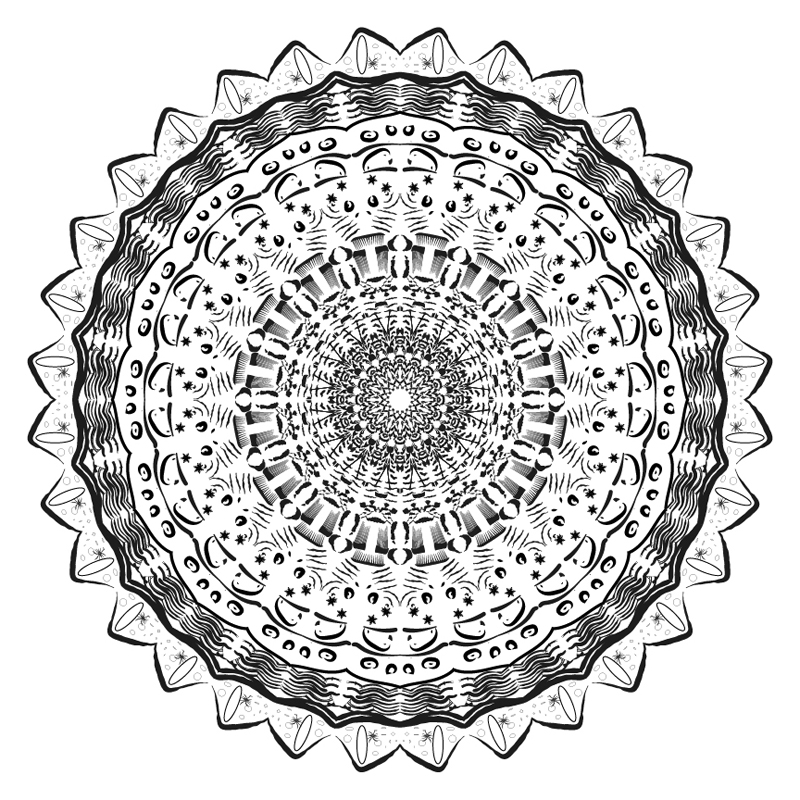
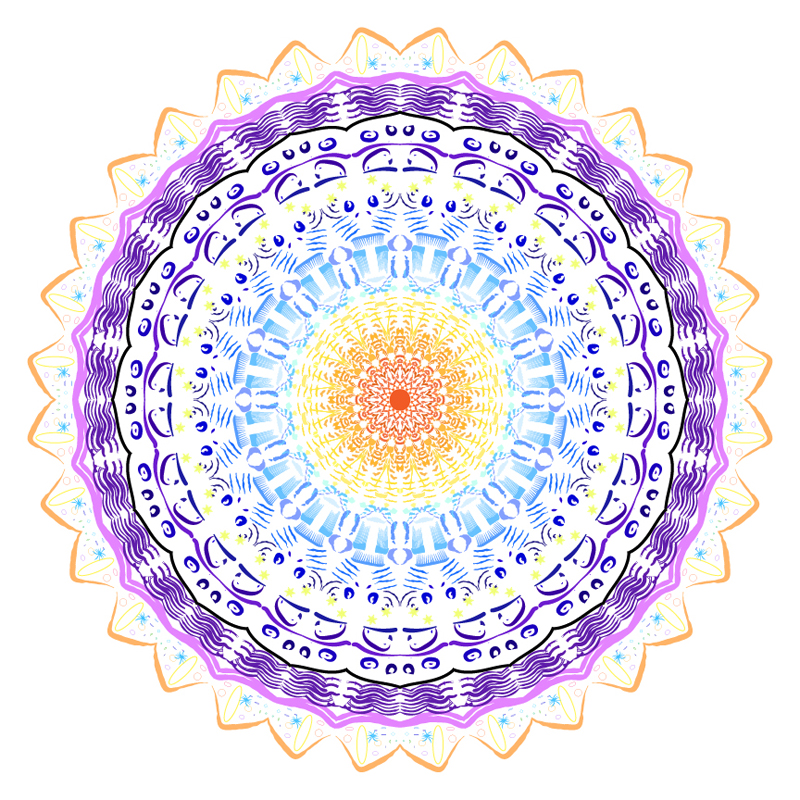
Mandala Artist Statement
When creating my mandala, I valued the creativity that I was allowed to have. I could add any shapes, lines, or colors to my mandalas. I also valued the simplicity of the mandala, the way we set up the Illustrator document made it quick and easy to make different drafts, following any flow or ideas in my head and then chose the one I liked the most.
I learned that If I actually put time and effort into something, I can make something look good. Throughout the process of many projects last year, I felt that I didn’t really try that hard and settled on inferior work that took less time. This year, I want to spend more time perfecting my work and strive for good quality work over a quick and easy supplement.
This I Believe Essay and Video
For the This I Believe project, we first had to write an essay about something that we believe in. My belief was “that life’s greatest moments are during an adventure.” I had trouble writing the essay at the beginning because I had so many beliefs and I wasn’t sure which one to write about. When I finally settled on writing about adventure, the essay came together very quickly.
After completing the essay, we then had to make a video for it in Digital Media. Using Adobe After-Effects, I created a short video using images and the audio of me reading the essay. I think my video came out well because of the good photo choice and the editing of the audio.
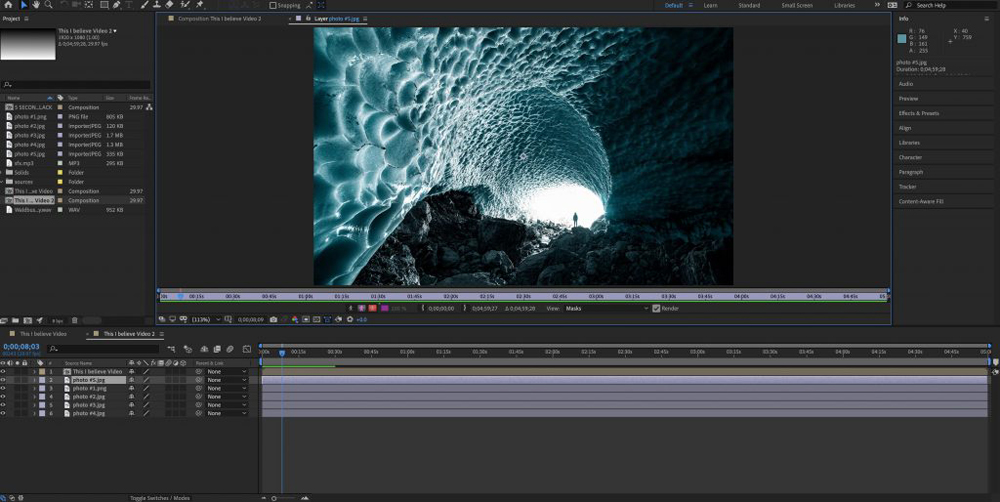
This I Believe Essay
My Love For Adventure
I believe that life’s greatest moments are during an adventure. When you think of an adventure, you may think of the exploration of the West by Lewis and Clark or the quest of Frodo Baggins, but in reality an adventure could be experiencing something new or an exciting experience. Looking back at some of my most prominent memories, all of them have come from an adventure of some sort. The most notable one comes from my driving up the cliffs of Ngorongoro Canyon in Tanzania. Looking over the whole valley, I realized how my love for adventure has impacted my life. Whether it be lessons that I’ve learned, or discovering something new, I’ve always valued any type of adventure. But mostly, I felt free. I felt free to do whatever I want, I felt free knowing that I could be anything I want, I felt free as the small, roofless Jeep was barrilling up the dirt road and the hot Savannah wind in my face. In this Jeep, I looked back at every notable memory I had, I saw myself on countless adventures and making amazing memories that I’ll never forget. I was inspired by that day so much, that I decided from that point on to try and make my life full of adventures. Whatever free time I had, I was out doing something and seeing new things. Some adventures didn’t have to be like the movies, they could just be driving around with my friends, or hiking around a lake. Not only did I become a more adventurous person after the time in the Jeep, I believe I became more easy going, more mature, and freer. Through these small adventures that I went on, I developed an interest in photography and have been taking photos ever since to document my adventures. I feel that my belief that life’s greatest memories are during adventures has made me a better person and allow me to see more of the world around me, and develop a greater understanding of how it works. Going into the future past high school I will continue to strive for adventure and to live my life to the fullest.
Photoshop Art
In the Photoshop Art unit, we learned how to use different brushes to draw on our photos and to convert two photos into one composite image. I really enjoyed this unit because I learned so much about brushes in photoshop and the many was to manipulate images to create unique effects. After watching tutorials on the many techniques, we had two main projects; the Photoshop Painting and the Photoshop Photo Conversions.
Photoshop Painting
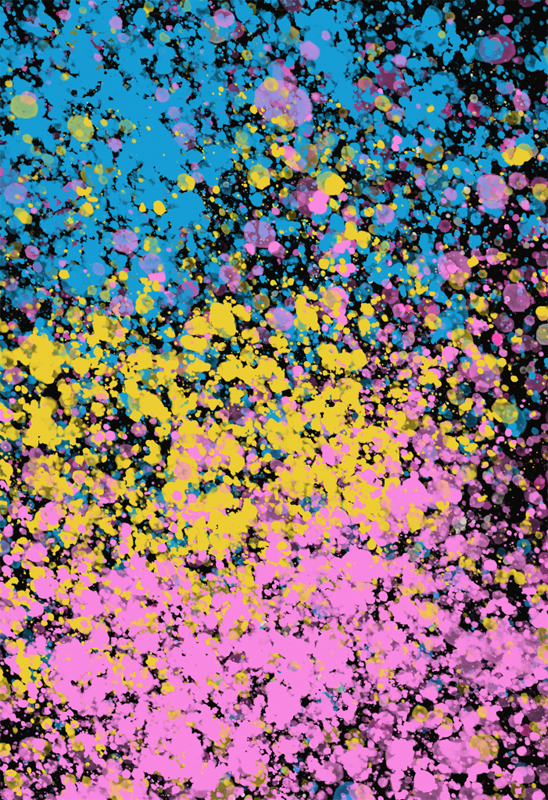
Photoshop Painting Artist Statement
For my Photoshop painting, I chose to make a splatter style painting. I decided on this style because I struggled with watercolor and pastel painting. I wanted the colors to really pop, so I made the background color black which also adds a lot of contrast. If I could change anything, I would want to add an element of motion somewhere. I really liked this project and it will propel my motivation for future projects.
Photoshop Photo Conversions
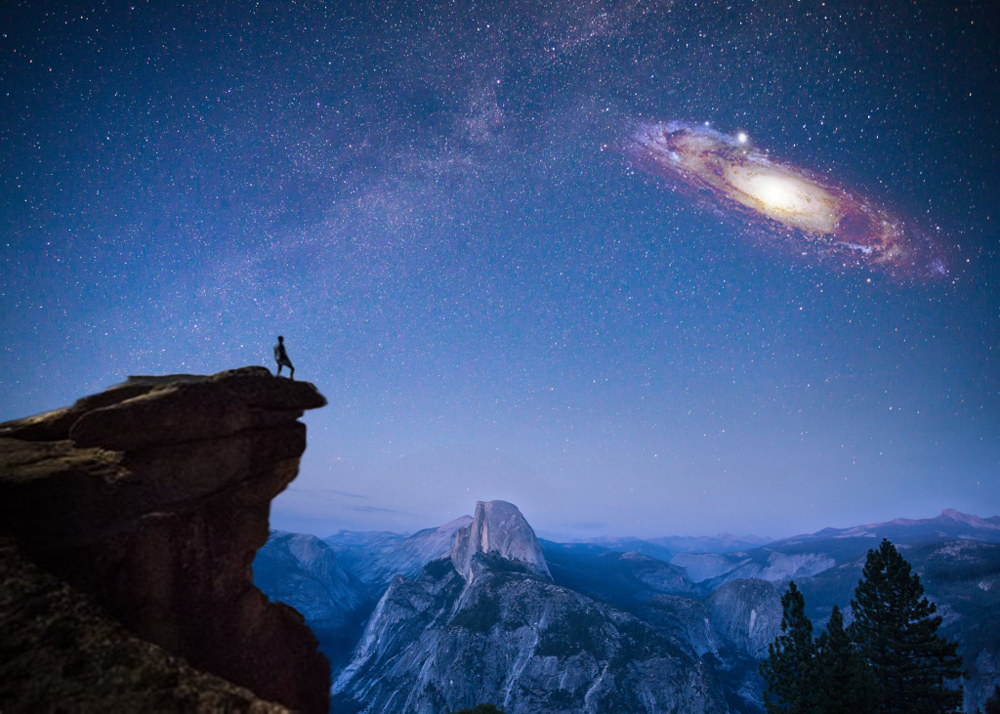
Photoshop Photo Conversion Artist Statement
PSA Illustrator Assignment
For the PSA assignment, we were posed with designing an illustration in Adobe Illustrator that has to do with our This I Believe essay. Since my essay was about my love for adventure, I wanted to make my PSA about how people should also live adventurously.
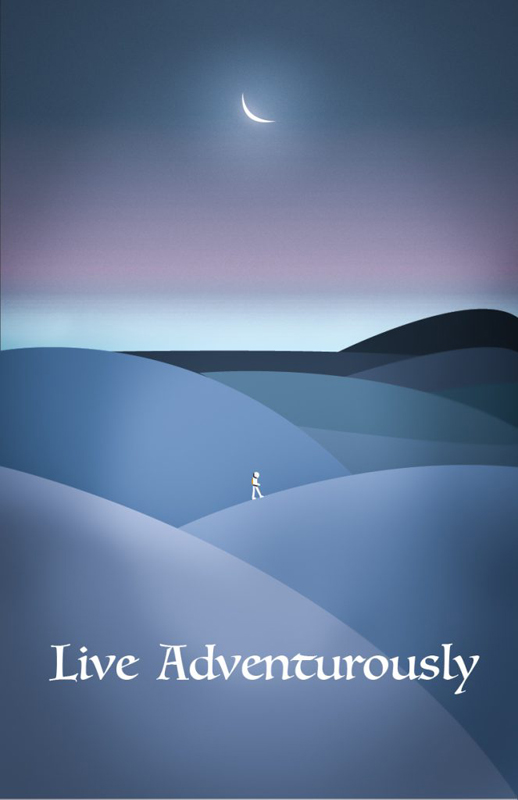
PSA Artist Statement
In my PSA, I wanted to convey the mood of adventure. In my illustration, I created sand dunes at night with a person walking through them, seemingly on a long voyage. I was inspired by White Sands National Monument in New Mexico, where all the sand dunes are sugar white and under the moonlight become a beautiful shade of blue that makes it look like another planet. This contrast of what the sand dunes look like at night and what we usually associate with what the Earth usually looks like sparks a feeling of an other worldly adventure here on Earth. I hope to inspire people to live for the moment and strive for adventure. I used blue tones for the dunes rather than a usual yellow or orange to show that this isn’t normal and is intriguing to the viewer.
To make this, I mostly used the pen tool in Adobe Illustrator to make the dunes and the person. I purposely made the person very vague with little features to show that it could be anyone, including the viewer. For the sky, I used the shape tool and created a custom gradient to show the different colors in the sky during the dusk hours of the night. I edited the sky by adding film grain to make it seem more realistic and to make the mood seem darker. The hardest part of my PSA was creating gradients for the dunes to show how the light from the Moon was hitting the dunes. Another problem I had to overcome was making the transitions from one dune to the other seamless and seem like it could be real.
Honors Memoir Essay
For our first Honors assignment, We were tasked with reading a famous memoir and writing an essay about it. I chose Trevor Noah’s “Born A Crime”, which details his rough South African upbringing during Apartheid.
Some people write memoirs that are compelling because the authors did something extraordinary and we want to know how they got to that place. Trevor Noah, a famous comedian and TV host, had a challenging upbringing during apartheid in South Africa, which lead him to create his own values that dig deep into who he is and makes for his powerful memoir, Born a Crime. These values are; race, religion, family, and poverty, all aspects of life that Noah had to learn in order to survive in the environment that God gave him. The most important value in Noah’s life is race, which kept him vulnerable at a young age, but made Noah into a smarter and better person.
Noah was born to a black mother from Xhosa ancestry in Johannesburg, but his father was a white man from Switzerland. His vulnerability started as soon as he was born, as it was illegal to be biracial in South Africa which led to him not fitting in to his society. While his mother sought to protect him, the reality of him not being accepted by both blacks and whites made him feel isolated. When he was younger, he and his mother moved around a lot because they were poor, but one thing that was consistent was going to church multiple times per week to get more “blessings” for their family. But being mixed race- like the name of his book, Born a Crime- was always something that he had to overcome in his life in order to survive.
In his memoir, Trevor Noah focuses on race in all aspects of his life including school. For example, when he went to a private school, he was confused about how the school put all the white kids in the upper classes and the black kids in the lower classes. “At the end of grade six I left Maryvale to go to H.A. Jack Primary, a government school. I had to take an aptitude test before I started, and, based on the results of the test, the school counselor told me, “You’re going to be in the smart classes, the A classes.” I showed up for the first day of school and went to my classroom. Of the thirty or so kids in my class, almost all of them were white. There was one Indian kid, maybe one or two black kids, and me. Then recess came. We went out on the playground, and black kids were everywhere. It was an ocean of black, like someone had opened a tap and all the black had come pouring out. I was like, Where were they all hiding? The white kids I’d met that morning, they went in one direction, the black kids went in another direction,and I was left standing in the middle, totally confused. Were we going to meet up later on? I did not understand what was happening.(44)” Being of mixed race, Noah wasn’t sure which direction he should take, the black or the white. Once he learned that all the black kids were disproportionately put into the “B” classes, young Trevor knew that’s where he belonged. When it came to choosing which race he associated with, there was no doubt in his mind he was black.
Throughout the course of the book, we see Noah feeling isolated because of his race and not really fitting in with one group. Even his own family treated him differently because of his white half. To try and be accepted into different groups, Noah would learn different languages to prove to people that he was one of them. “I soon learned that the quickest way to bridge the race gap was through language. Soweto was a melting pot: families from different tribes and homelands. Most kids in the township spoke only their home language, but I learned several languages because I grew up in a house where there was no option but to learn them. My mom made sure English was the first language I spoke… I learned to use language like my mother did. I would simulcast-give you the program in your own tongue. I’d get suspicious looks from people just walking down the street. “Where are you from?” they’d ask. I’d reply in whatever language they’d addressed me in, using the same accent that they used. There would be a brief moment of confusion, and then the suspicious look would disappear. “Oh, okay. I thought you were a stranger. We’re good then.(42-43)’” By learning these languages, Trevor could connect with many different groups of people and finally feel like he belonged.. Learning many languages also protected Trevor because of the racial divide in South Africa at the time. By speaking English, the white people would treat him better, by speaking Zulu, he wouldn’t get robbed, by speaking Xhosa, he could connect with kids at school.
Trevor’s vulnerability when it came to race started at a young age. He didn’t really think people of different colors were different races, just the same people of different shades. As he grew older, Noah learned of the racial divide and the issues that come from that. Growing up in a divided nation, Noah, from a very young age, learned about the social norms of different races. However, his mother made it clear that he could do anything that he dreamed of and she sought to make his life full, even if they had very little. Instead of giving him a Xhosa name that meant something, Trevor’s mother decided to give him a name that meant nothing, so that he would not be held down by fate. “My mother took me places black people never went. She refused to be bound by ridiculous ideas of what black people couldn’t or shouldn’t do. She’d take me to the ice rink to go skating. Johannesburg used to have this epic drive-in movie theater, Top Star Drive-In, on top of a massive mine dump outside the city. She’d take me to movies there; we’d get snacks, hang the speaker on our car window. Top Star had a 360-degree view of the city, the suburbs, Soweto. Up there I could see for miles in every direction. I felt like I was on top of the world.
In addition, Trevor talks about how his mom raised him as if there were “no limitations on where I could go or what I could do. When I look back I realize she raised me like a white kid-not white culturally, but in the sense of believing that the world was my oyster, that I should speak up for myself, that my ideas and thoughts and decisions mattered.(55)” This quote shows that Trevor’s mom was not going to let Apartheid stop him from believing in himself just because of his race.
Throughout his memoir, Trevor Noah uses his core values to dive into what it’s like growing up while biracial in racially-divided South Africa. The four core values of race, religion, family, and poverty are prevalent in every aspect of Noah’s life. His memoir details his vulnerability at a young age, and as he grows up, those moments of vulnerability get even more intense. Although most people reading his memoir didn’t grow up in Johannesburg, we can empathize with his struggles. Anyone reading this book can understand more about what it’s like to have race be at the forefront of your life. Trevor learned to live with not fitting into any one group in his society, but didn’t let that slow him down or keep him from becoming the person he is today.